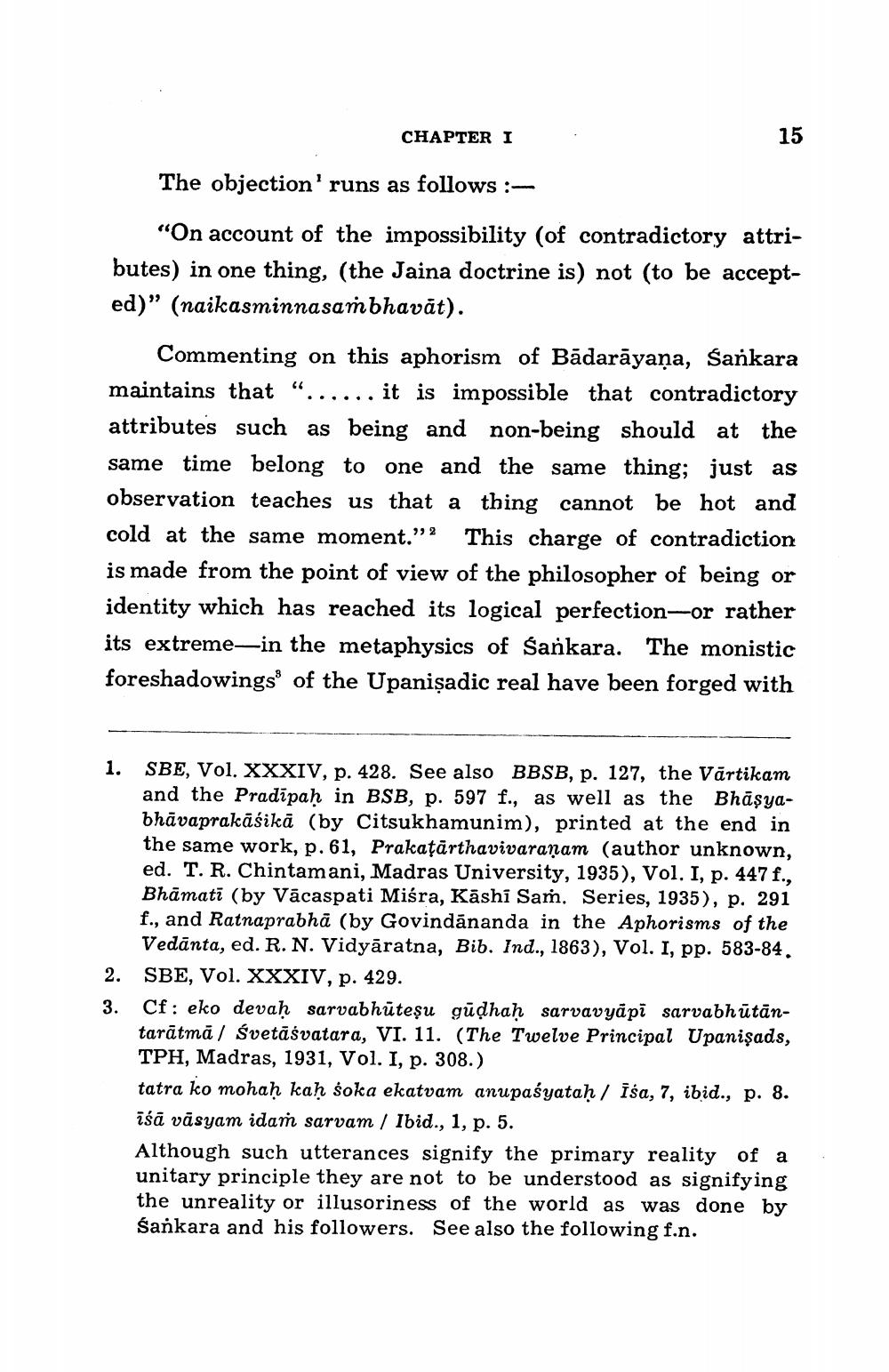________________
CHAPTER I
ER I
.
15
The objection'runs as follows :
"On account of the impossibility (of contradictory attributes) in one thing, (the Jaina doctrine is) not (to be accepted)” (naikasminnasambhavāt).
Commenting on this aphorism of Bādarāyaṇa, śankara maintains that “...... it is impossible that contradictory attributes such as being and non-being should at the same time belong to one and the same thing; just as observation teaches us that a thing cannot be hot and cold at the same moment." This charge of contradiction is made from the point of view of the philosopher of being or identity which has reached its logical perfection-or rather its extreme—in the metaphysics of Sankara. The monistic foreshadowings of the Upanişadic real have been forged with
1. SBE, Vol. XXXIV, p. 428. See also BBSB, p. 127, the Vārtikam
and the Pradīpah in BSB, p. 597 f., as well as the Bhāşyabhāvaprakāśikā (by Citsukhamunim), printed at the end in the same work, p. 61, Prakațārthavivaranam (author unknown, ed. T. R. Chintamani, Madras University, 1935), Vol. I, p. 447 f., Bhāmati (by Vācaspati Miśra, Kāshi Sam. Series, 1935), p. 291 f., and Ratnaprabhā (by Govindananda in the Aphorisms of the Vedānta, ed. R. N. Vidyāratna, Bib. Ind., 1863), Vol. I, pp. 583-84.
SBE, Vol. XXXIV, p. 429. 3. Cf: eko devaḥ sarvabhūteşu gūdhah sarvavyāpī sarvabhūtān
tarātmā / svetāśvatara, VI. 11. (The Twelve Principal Upanişads, TPH, Madras, 1931, Vol. I, p. 308.) tatra ko mohaḥ kaḥ śoka ekatvam anupaśyataḥ / iša, 7, ibid., p. 8. īsā vāsyam idaṁ sarvam / Ibid., 1, p. 5. Although such utterances signify the primary reality of a unitary principle they are not to be understood as signifying the unreality or illusoriness of the world as was done by sankara and his followers. See also the following f.n.




